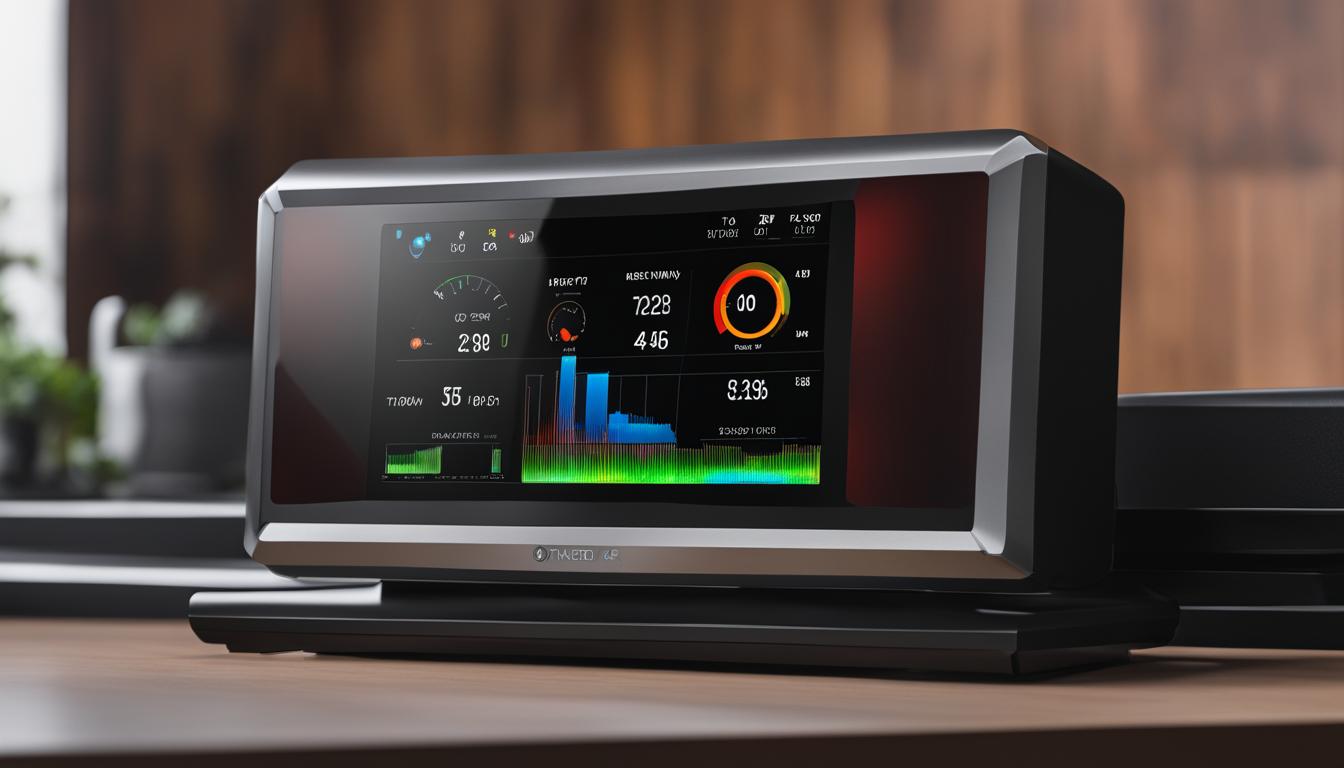VPD monitoring is crucial for maintaining plant health and optimizing yields. By selecting the right equipment for VPD monitoring, growers can accurately measure and monitor temperature, humidity, and VPD levels in their grow areas. This helps in creating an optimal growing environment for plants at different stages of growth.
The SensorPush system is recommended for remote monitoring, as it measures temperature, humidity, and VPD in real-time and sends alerts to a mobile phone if any parameters go out of the desired range. The system calculates VPD on the fly, combining temperature and relative humidity into a single metric that measures transpiration.
Different target VPD ranges are recommended for clones/seedlings, vegetative stage, and flowering stage, and it is advisable to set alerts slightly above or below the target range to avoid frequent notifications. The SensorGrow probe should ideally be placed at the top of the canopy and in the middle of the grow area for accurate measurements.
- NO INSTALLATION FRUSTRATION: While other temperature sensors require complicated, glitchy setup, SensorPush skips the headache with a setup…
- SIMPLE AND RELIABLE: SensorPush is manufactured with reliable hardware, a battery life of 1-2 years in typical conditions, and excellent…
- NO INSTALLATION FRUSTRATION: While other temperature sensors require complicated, glitchy setup, SensorPush skips the headache with a setup…
- SIMPLE AND RELIABLE: SensorPush is manufactured with reliable hardware, a battery life of 1-2 years in typical conditions, and excellent…
- NO INSTALLATION FRUSTRATION: While other temperature sensors require complicated, glitchy setup, SensorPush skips the headache with a setup…
- SIMPLE AND RELIABLE: SensorPush is manufactured with reliable hardware, a battery life of 1-2 years in typical conditions, and excellent…
- Smart WiFi Temperature Sensor: With the 3 included sensors, you can easily monitor temperature and humidity data in real time from anywhere…
- Versatile and Accurate: Swiss-made sensors provide a wide range for detecting humidity and temperature. The range for temperature is between…
- NO MORE SUBSCRIPTIONS! Temp Stick is the Best Pick for Remote WiFi Temperature and Humidity Monitoring from Anywhere, Anytime. Temp Stick…
- INSTANT, REAL-TIME ALERTS: Constantly monitors conditions every second. Be cautious of competitors promising unlimited EMAILS yet…
- Smart WiFi Control: Easily monitor temp and humidity data in real time from anywhere. With stable WiFi and Bluetooth connection via the…
- Fast & Accurate: Equipped with a Swiss made sensor, this WiFi thermometer provides precise readings. Temperature is accurate to…
Last update on 2025-04-22 / Affiliate links / Images from Amazon Product Advertising API
The SensorPush WiFi gateway is optional but highly recommended as it enables push notifications to a mobile device and eliminates the need for a Bluetooth connection. Overall, the SensorPush remote monitoring system is a reliable and effective solution for VPD monitoring in agriculture.
Key Takeaways:
- VPD monitoring is essential for maintaining plant health and optimizing yields.
- The SensorPush system provides real-time monitoring of temperature, humidity, and VPD levels.
- Different VPD ranges are recommended for different stages of plant growth.
- The SensorPush WiFi gateway allows for remote monitoring and push notifications.
- Selecting the right VPD monitoring equipment is crucial for accurate measurements and a successful growing environment.
The Importance of VPD Monitoring in Horticulture
VPD monitoring is an essential aspect of horticulture, as it enables growers to maintain an optimal growing environment for plants. By carefully monitoring and controlling temperature, humidity, and VPD levels, growers can ensure healthy plant growth and maximize yields.
Temperature directly affects photosynthesis and the rate of plant growth. Different temperature ranges are recommended for various stages of plant growth, and monitoring temperature allows growers to make informed decisions regarding heating or cooling systems to maintain the ideal conditions.
Humidity is another critical factor in VPD monitoring. Proper humidity levels are necessary for plant transpiration and nutrient absorption. By accurately measuring and adjusting humidity, growers can create a favorable environment for plants to thrive.
VPD combines temperature and humidity into a comprehensive metric that indicates the moisture content of the air. By monitoring VPD levels, growers can make necessary adjustments to irrigation, ventilation, and other environmental factors to optimize plant health and growth. A VPD monitoring system, such as the SensorPush system, provides real-time data on temperature, humidity, and VPD levels, allowing growers to make informed decisions and ensure the best possible conditions for their plants.
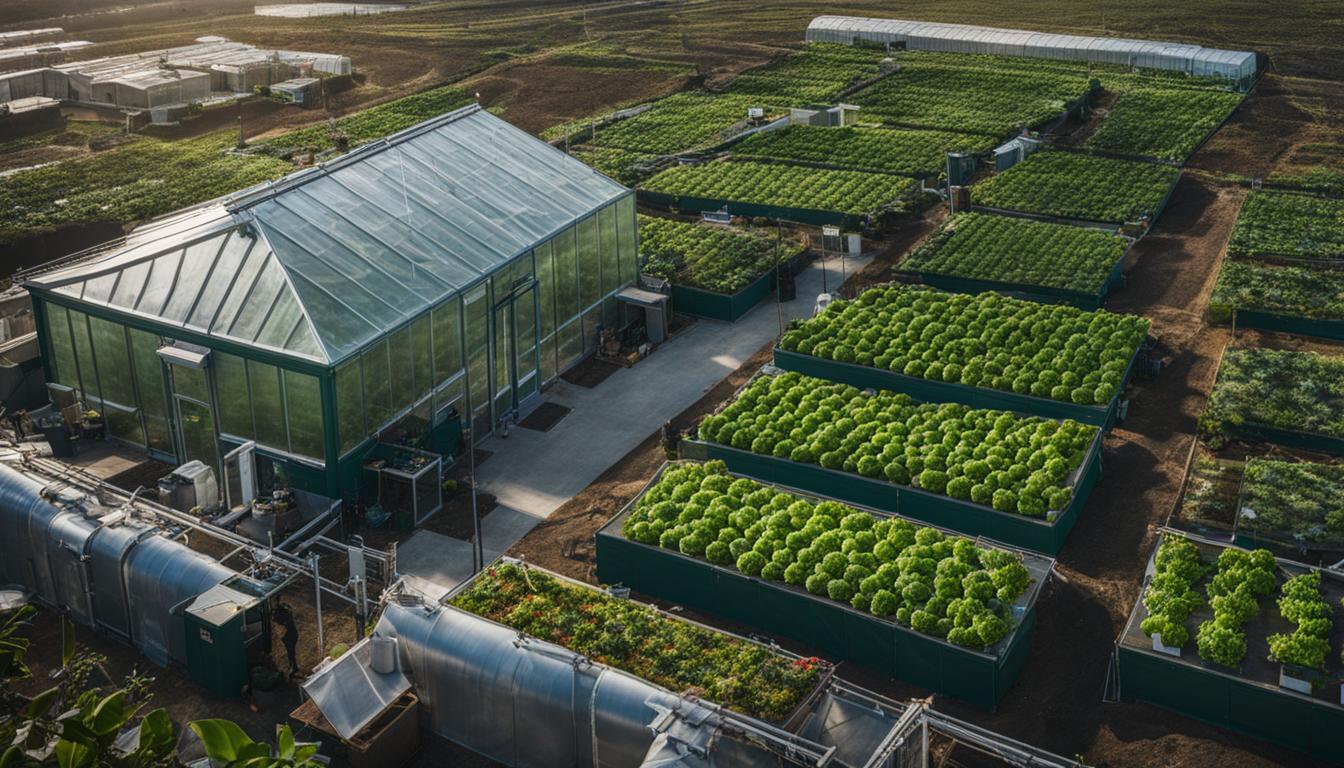
The Importance of VPD Monitoring in Agriculture
In agriculture, VPD monitoring is of utmost importance to ensure the success of crop production. By monitoring VPD levels, growers can prevent water stress, excessive evaporation, and other unfavorable conditions that can hinder plant growth and development.
VPD monitoring helps growers optimize irrigation practices by providing insights into the moisture content of the air. This allows for more efficient water usage, minimizing water waste while supporting plant transpiration and nutrient absorption.
Furthermore, VPD monitoring enables growers to identify potential issues early on and take corrective actions. By regularly monitoring and maintaining the ideal VPD range, growers can create a productive and sustainable growing environment that maximizes the health and yields of their crops.
| Benefits of VPD Monitoring in Agriculture | How VPD Monitoring Helps |
|---|---|
| Optimizes irrigation practices | By providing insights into moisture content in the air, allowing for efficient water usage and preventing water stress. |
| Identifies potential issues | By monitoring VPD levels regularly, growers can detect and address problems early on, minimizing crop damage. |
| Maximizes plant health and yields | By maintaining the optimal VPD range, growers can create a conducive environment for plant growth and achieve higher crop yields. |
PuroAir 240 Air Purifier
- Top selling air purifier on Amazon
- Cleans 1,115 square feet automatically
- Most powerful HEPA filter available
- Quietest purifier we tested
- Filters allergy-causing pet dander, dust, smoke, pollen and odors
- Includes filter and 2 year warranty
Medify MA-25 Air Purifier with True HEPA H13 Filter
- Efficiently cleans spaces up to 825 sq ft in one hour
- TRUE HEPA H13 FILTRATION
- 3 fan speeds, with the lowest setting operating virtually silent
- Touch panel with 0-8 hour timer, fan speed, sleep mode, filter replacement indicator, and child lock,
- Backed by a USA registered Lifetime Warranty. The replacement filter (B084Q965BF) lasts 2,500 hours or about 3-4 months. CARB, ETL, and Energy Star certified.
Medify MA-22 Air Purifier with True HEPA H13 Filter
- Efficiently cleans spaces up to 555 sq ft in one hour
- TRUE HEPA H13 FILTRATION
- 3 fan speeds, with the lowest setting operating virtually silent
- Touch panel with 0-8 hour timer, fan speed, sleep mode, filter replacement indicator, and child lock, great for both kids and pets
- Backed by a USA registered Lifetime Warranty
MORENTO Smart Home Air Purifier
- 4-in-1 all-around purification, and it effectively cleans the air in the room of 2,050 Ft²
- MORENTO air purifier's PM2.5 sensor to control indoor air quality
- The sleek handheld design makes it easy to move around
- Smart home air purifier with Wifi function
- The HEPA Home Air Purifier utilizes a four-layer filtration system that is twice as effective as traditional filters
- The pet air purifier has a safety lock that avoids accidental button presses
- This air purifiers for home large room is ETL, DOE, ENERGY STAR, EPA and FCC certified and meets the requirements of the California Air Resources Board (CARB), it is a home pet air purifier you can use with confidence
MIKO Air Purifier For Home HEPA
- Multiple fan speeds, built-in timer, maximum surface area for air flow, all around suction, replacement filter indicator and essential oil port
- Large filtration components allow for a more thorough and well rounded purifying process throughout your room
- Oscillating Intake process collects all particles in a tornado motion which helps maximize efficiency while distributing fresh air
- Essential oil amplifier, easy touch control panel, and modern design will replace unhealthy particles with clean and fresh air in any room
- Lifetime support and full 1 year warranty, ETL, CARB, EPA, UL and ROHS certificated, CADR of 150m3/h, Range of 400 ft2, 25db to 46db, just 25w of power.
The Key Conditions to Monitor for VPD Optimization
When it comes to VPD (Vapor Pressure Deficit) monitoring, there are several key conditions that growers need to carefully monitor and optimize. These conditions include temperature, humidity, lighting, and CO2 levels. By keeping a close eye on these factors, growers can create an ideal growing environment that promotes healthy plant growth and maximizes yields.
Temperature
Temperature plays a crucial role in VPD monitoring as it directly affects plant growth and development. Different temperature ranges are recommended for different stages of plant growth, and it is important to maintain the optimal temperature range to ensure optimal VPD levels. By monitoring temperature closely and making necessary adjustments, growers can create an environment that supports healthy plant growth.
Humidity
Humidity is another important factor in VPD monitoring as it affects plant transpiration and nutrient absorption. Maintaining the ideal humidity range is crucial to prevent water stress or excessive evaporation. By closely monitoring and controlling humidity levels, growers can ensure proper plant transpiration and nutrient uptake, leading to healthier plants and better yields.
Lighting
Lighting is an essential consideration in VPD monitoring, especially in indoor or greenhouse environments. Adequate light intensity is necessary for photosynthesis and overall plant growth. Depending on the stage of plant growth and desired growth densities, the amount of light exposure may need to be adjusted. By ensuring the right balance of light intensity and VPD levels, growers can promote healthy plant growth and optimize yields.
CO2 Levels
CO2 levels also play a vital role in VPD monitoring as plants require CO2 for photosynthesis and growth. Monitoring and maintaining adequate CO2 levels in the grow area is crucial for optimal plant development. By ensuring the right balance of environmental conditions and monitoring VPD levels, growers can create an ideal growing environment that supports healthy plant growth and maximizes yields.
| Condition | Importance |
|---|---|
| Temperature | Directly affects plant growth and development. Different temperature ranges are recommended for different stages of plant growth. |
| Humidity | Affects plant transpiration and nutrient absorption. Proper humidity levels are necessary for healthy plant growth. |
| Lighting | Essential for photosynthesis and overall plant growth. Adequate light intensity is crucial for optimal plant development. |
| CO2 Levels | Plays a vital role in plant photosynthesis and growth. Monitoring and maintaining appropriate CO2 levels is essential for optimal plant development. |
Choosing the Right Monitoring System for VPD Monitoring
When it comes to VPD monitoring, selecting the right monitoring system is essential for accurate and efficient measurements. The Grow Linc system by Check-it Solutions offers scalable solutions that can be customized to fit the specific needs and size of any grow operation. Whether you are starting small or looking to expand, this system allows growers to easily add more sensors and devices as needed.
The Grow Linc system provides real-time monitoring of temperature, humidity, and other environmental conditions, giving growers valuable insights into their grow areas. By tracking and analyzing this data, operators gain a deeper understanding of the growing environment and can make informed decisions to optimize plant health and yields.
| Features | Considerations |
|---|---|
| Number of inputs | Ensure the system has enough inputs to cover all the necessary monitoring points in your grow area. |
| Wireless or hardwired sensors | Consider the ease of installation and flexibility of a wireless system versus the stability of a hardwired setup. |
| Communication options | Choose a system that offers reliable communication options such as phone, cellular, or Wi-Fi. |
| Alarm notification capabilities | Ensure the system can send alerts and notifications when parameters go out of the desired range. |
| Programming and status check functionalities | Look for a system that allows for flexible programming and easy status checks to monitor the system’s performance. |
| Data logging | Consider whether the system offers data logging capabilities for historical analysis and trend identification. |
| Return on investment | Weigh the cost of the system against the benefits it provides to ensure a favorable return on investment. |
By choosing the right monitoring system for VPD monitoring, growers can ensure accurate data collection, optimize plant health, and maximize yields. The Grow Linc system by Check-it Solutions offers a reliable and comprehensive solution that can be tailored to meet the specific needs of any grow operation.
The Role of Temperature in VPD Monitoring
Temperature is a critical factor in VPD monitoring as it directly impacts plant growth and development. Different temperature ranges are recommended for each stage of plant growth to create an optimal environment. By closely monitoring and maintaining the ideal temperature range, growers can ensure optimal VPD levels and promote healthy plant growth.
The SensorPush system, a reliable VPD monitoring solution, provides accurate temperature measurements in real-time. This allows growers to make timely adjustments to maintain the desired temperature range. By utilizing the SensorPush system, growers can create an ideal growing environment that supports optimal VPD levels.
To understand the impact of temperature on VPD monitoring, refer to the table below:
| Plant Growth Stage | Temperature Range |
|---|---|
| Clones/Seedlings | 70-75°F |
| Vegetative Stage | 70-80°F |
| Flowering Stage | 65-80°F |
The Impact of Temperature on VPD Monitoring
- Temperature affects the rate of photosynthesis and plant growth.
- Monitoring and maintaining the optimal temperature range helps ensure transpiration and nutrient absorption.
- The SensorPush system provides real-time temperature measurements, allowing for timely adjustments to maintain the desired temperature range.
By considering temperature alongside other key conditions, such as humidity, lighting, and CO2 levels, growers can create an ideal growing environment that promotes optimal VPD levels and maximizes plant health and yields.
The Importance of Humidity in VPD Monitoring
Humidity plays a crucial role in VPD monitoring as it directly affects plant transpiration and nutrient absorption. Maintaining the right humidity range is essential for optimal plant growth and overall health. The SensorPush system, mentioned earlier, provides real-time humidity measurements, allowing growers to monitor and adjust humidity levels as needed.
By maintaining the ideal humidity range, plants can effectively transpire, ensuring the efficient uptake of nutrients and water. High humidity levels can lead to excess moisture on the leaves, increasing the risk of fungal diseases. On the other hand, low humidity levels can result in excessive evaporation and water stress for plants.
When using the SensorPush system for VPD monitoring, growers can ensure that the humidity levels are within the recommended range for each stage of plant growth. This data, combined with temperature readings, allows for a comprehensive understanding of the plant’s environment and helps growers make informed decisions regarding irrigation, ventilation, and other adjustments to maintain optimal VPD levels.
Recommended Humidity Ranges for Plant Growth:
| Stage of Growth | Humidity Range |
|---|---|
| Clones/Seedlings | 70-80% RH |
| Vegetative Stage | 40-70% RH |
| Flowering Stage | 40-50% RH |
By monitoring and maintaining the recommended humidity range, growers can optimize VPD levels and create an ideal growing environment for their plants. The SensorPush system, with its accurate humidity measurements and real-time data, is an invaluable tool for achieving and maintaining optimal humidity levels throughout the plant’s life cycle.
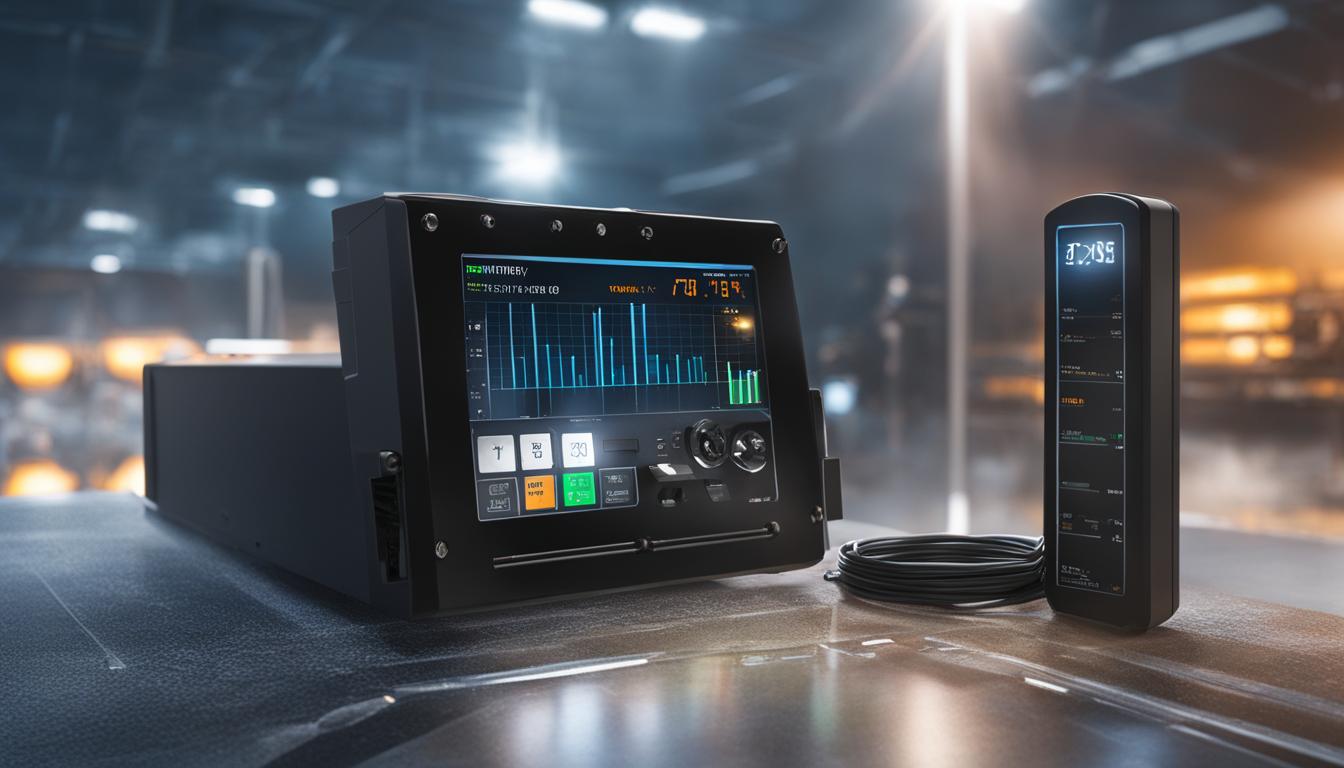
Summarizing, humidity is a crucial factor in VPD monitoring as it directly impacts plant transpiration and nutrient absorption. By using a reliable monitoring system like SensorPush, growers can accurately measure and track humidity levels, ensuring the ideal conditions for optimal plant growth and maximizing yields.
Lighting Considerations for VPD Monitoring
When it comes to VPD monitoring, lighting plays a crucial role, especially in indoor or greenhouse environments. Adequate light intensity is essential for photosynthesis and overall plant growth. Depending on the stage of plant growth and desired growth densities, the amount of light exposure may need to be adjusted accordingly.
While the SensorPush system does not directly measure light intensity, it provides valuable data on temperature, humidity, and VPD levels, which can be used in conjunction with lighting data to optimize plant growth. By ensuring the right balance of light intensity and VPD levels, growers can promote healthy plant growth and maximize yields.
Lighting Recommendations:
- Choose the right type of lighting: LED grow lights are often preferred for their energy efficiency and customizable light spectrums. They provide a balanced spectrum for different growth stages and can be adjusted to meet the specific needs of different plant varieties.
- Consider light intensity: Different plants have varying light intensity requirements. Ensure that the light intensity is appropriate for the specific plant species being cultivated.
- Adjust lighting duration: The duration of light exposure should be tailored to the growth stage of the plants. Seedlings and vegetative plants generally require longer periods of light exposure compared to flowering plants.
- Monitor lighting temperature: Excessive heat from lighting fixtures can increase the temperature in the grow area. It is important to monitor and manage lighting temperature to avoid overheating and detrimental effects on plant health.
By paying attention to these lighting considerations and utilizing the valuable data provided by the SensorPush system, growers can optimize lighting conditions in conjunction with VPD monitoring to create an ideal growing environment and promote healthy plant growth.
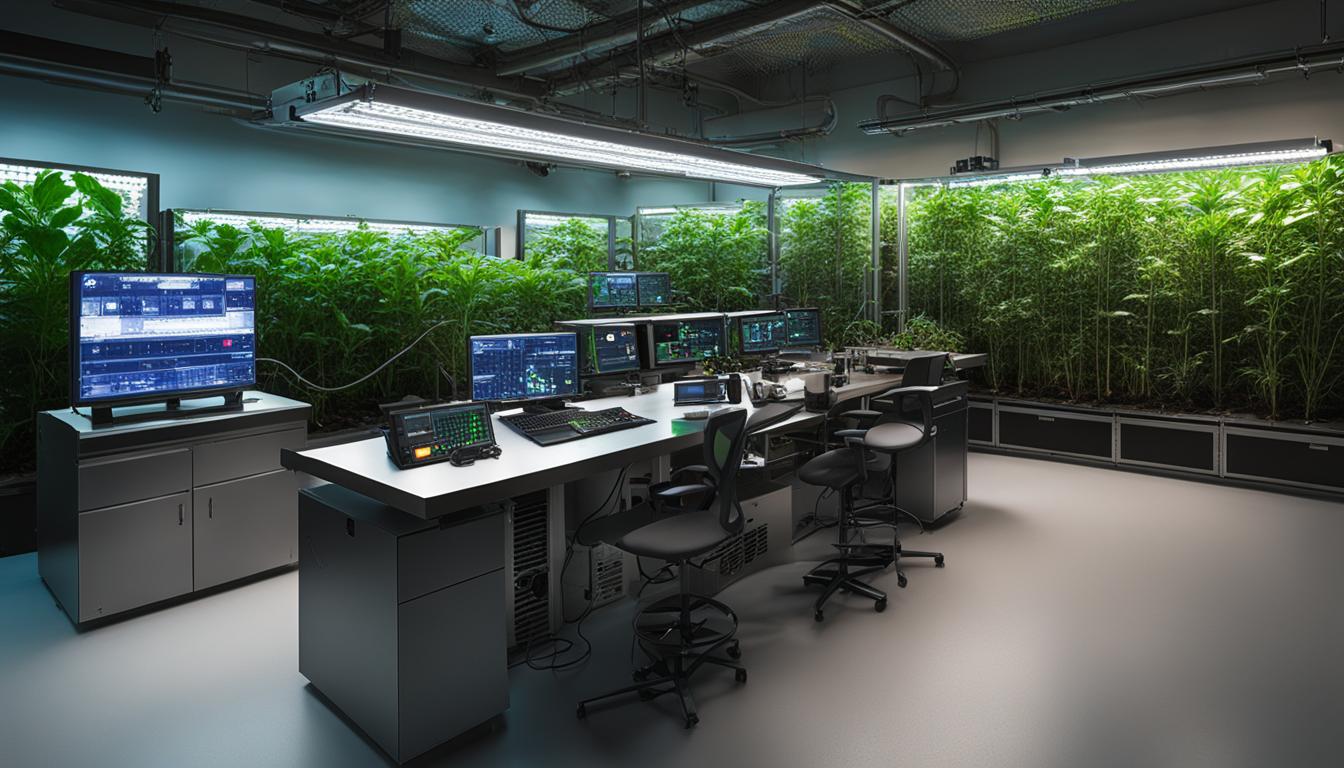
The Role of CO2 Levels in VPD Monitoring
The level of CO2 in the grow area is a crucial factor to consider in VPD monitoring. CO2, or carbon dioxide, is essential for photosynthesis and overall plant growth. Monitoring and maintaining appropriate CO2 levels is vital for optimizing plant development and maximizing yields. While the SensorPush system does not directly measure CO2 levels, it provides valuable data on temperature, humidity, and VPD levels, which can be used in conjunction with CO2 monitoring devices to ensure the right balance of environmental conditions for plant growth.
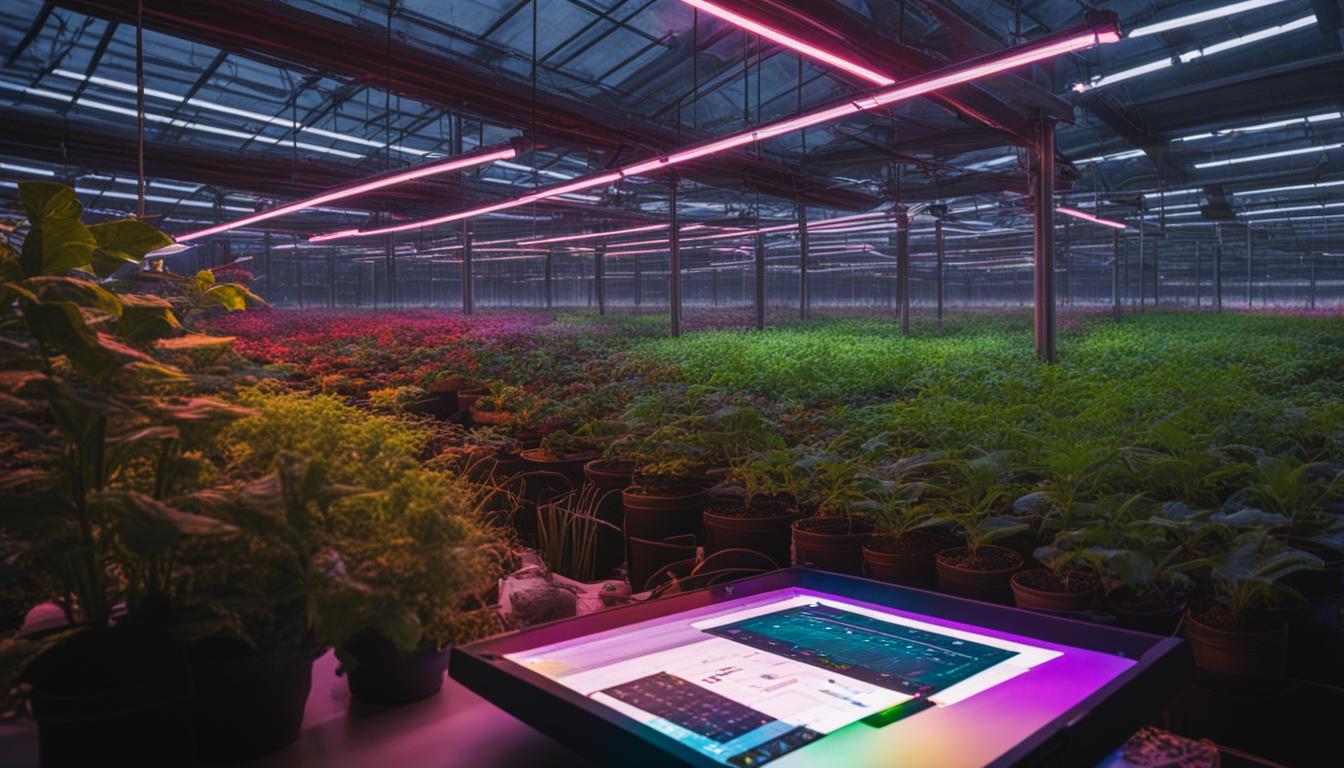
By maintaining the ideal CO2 range for plant growth, growers can enhance the efficiency of photosynthesis and promote healthy plant growth. It is recommended to maintain CO2 levels between 800 to 1200 parts per million (ppm) for most plants, although specific requirements may vary depending on the plant species and growth stage. Monitoring CO2 levels alongside VPD allows growers to create an optimal growing environment that supports optimal plant growth and maximizes yields.
| CO2 Range (ppm) | Growth Stage |
|---|---|
| 800-1200 | General range for most plants |
| 1000-1500 | Optimal range for some plants during vegetative stage |
| 1000-2000 | Optimal range for some plants during flowering stage |
By closely monitoring CO2 levels and ensuring the right balance of environmental conditions, growers can create an ideal growing environment that supports healthy plant growth and maximizes yields. The combination of VPD and CO2 monitoring allows for a comprehensive approach to optimizing plant health and maintaining an efficient growing operation.
Importance of Soil Moisture and Air Circulation in VPD Monitoring
In addition to monitoring temperature, humidity, and other environmental factors, it is crucial to consider soil moisture and air circulation in VPD monitoring. Soil moisture directly affects plant health and nutrient absorption, while proper air circulation promotes healthy plant growth and helps maintain optimal VPD levels.
Monitoring soil moisture is essential for ensuring that plants receive the right amount of water. By using soil moisture sensors, growers can accurately measure the moisture content in the soil and adjust their irrigation practices accordingly. This helps prevent both underwatering and overwatering, which can negatively impact plant health and VPD levels.
Adequate air circulation is also vital for VPD optimization. Proper airflow helps prevent the buildup of stagnant air, which can lead to high humidity levels and increase the risk of mold and disease. By implementing ventilation and exhaust systems, growers can ensure consistent air movement within the grow area, promoting transpiration and nutrient absorption while maintaining optimal VPD levels.
Overall, monitoring soil moisture and air circulation alongside temperature, humidity, lighting, and CO2 levels is crucial for creating an ideal growing environment for plants. By managing these key factors, growers can optimize VPD levels, promote healthy plant growth, and maximize their yields.
| Key Considerations | Actions |
|---|---|
| Soil Moisture | Use soil moisture sensors to measure moisture content and adjust irrigation practices accordingly |
| Air Circulation | Implement ventilation and exhaust systems to ensure proper airflow and prevent stagnant air |
| Temperature | Monitor and maintain the optimal temperature range for each stage of plant growth |
| Humidity | Maintain the ideal humidity range to promote proper plant transpiration and nutrient absorption |
| Lighting | Ensure adequate light intensity for photosynthesis and adjust exposure according to growth stages |
| CO2 Levels | Monitor and maintain appropriate CO2 levels for optimal plant development |
By considering these factors and implementing a comprehensive VPD monitoring system, growers can create an optimal growing environment that supports healthy plant growth, maximizes yields, and ensures the overall success of their cultivation efforts.
Ensuring Greenhouse Security in VPD Monitoring
When it comes to VPD monitoring in a greenhouse, one crucial aspect that often gets overlooked is security. Protecting the greenhouse from unauthorized access and potential damage is essential for maintaining a healthy and productive growing environment. By implementing the right security measures, growers can have peace of mind knowing that their plants are safe and secure.
One effective way to enhance greenhouse security is by using a reliable VPD monitoring system. The SensorPush system, for example, not only provides accurate and real-time data on temperature, humidity, and VPD levels but also offers valuable security features. The system can be connected to surveillance cameras and motion sensors, enabling instant notifications to be sent to the grower’s mobile device in case of any suspicious activity. This allows growers to take immediate action and prevent any potential threats to their greenhouse.
In addition to the VPD monitoring system, other security measures can also be implemented. Installing sturdy locks on greenhouse doors and ensuring that windows are secured with proper latches can help deter intruders. Adding security lighting around the greenhouse and using fencing or barriers can further enhance protection. It’s also advisable to regularly inspect the greenhouse for any signs of damage or tampering and to keep a record of visitors or personnel who have access to the facility.
Greenhouse Security Checklist:
- Connect VPD monitoring system to surveillance cameras and motion sensors
- Install sturdy locks and secure windows with proper latches
- Add security lighting around the greenhouse
- Use fencing or barriers to restrict access
- Regularly inspect the greenhouse for any signs of damage or tampering
- Maintain a record of visitors and personnel with access
| Security Measure | Description |
|---|---|
| Connect VPD monitoring system to surveillance cameras and motion sensors | Integrate the VPD monitoring system with security cameras and motion sensors to receive instant notifications of any suspicious activity. |
| Install sturdy locks and secure windows | Ensure that all doors and windows are equipped with reliable locks and latches to prevent unauthorized access. |
| Add security lighting | Install bright and motion-activated lighting around the greenhouse to deter potential intruders during the night. |
| Use fencing or barriers | Enclose the greenhouse area with durable fencing or barriers to restrict access and prevent unauthorized entry. |
| Regularly inspect for damage or tampering | Perform routine checks of the greenhouse to identify any signs of damage or tampering that may compromise security. |
| Maintain record of visitors and personnel | Keep a detailed record of all individuals who have access to the greenhouse to ensure accountability and traceability. |
By implementing these security measures and using a reliable VPD monitoring system, growers can safeguard their greenhouse and focus on creating the optimal growing environment for their plants. Greenhouse security should not be taken lightly, as it plays a crucial role in preventing potential threats and ensuring the overall success of the operation.
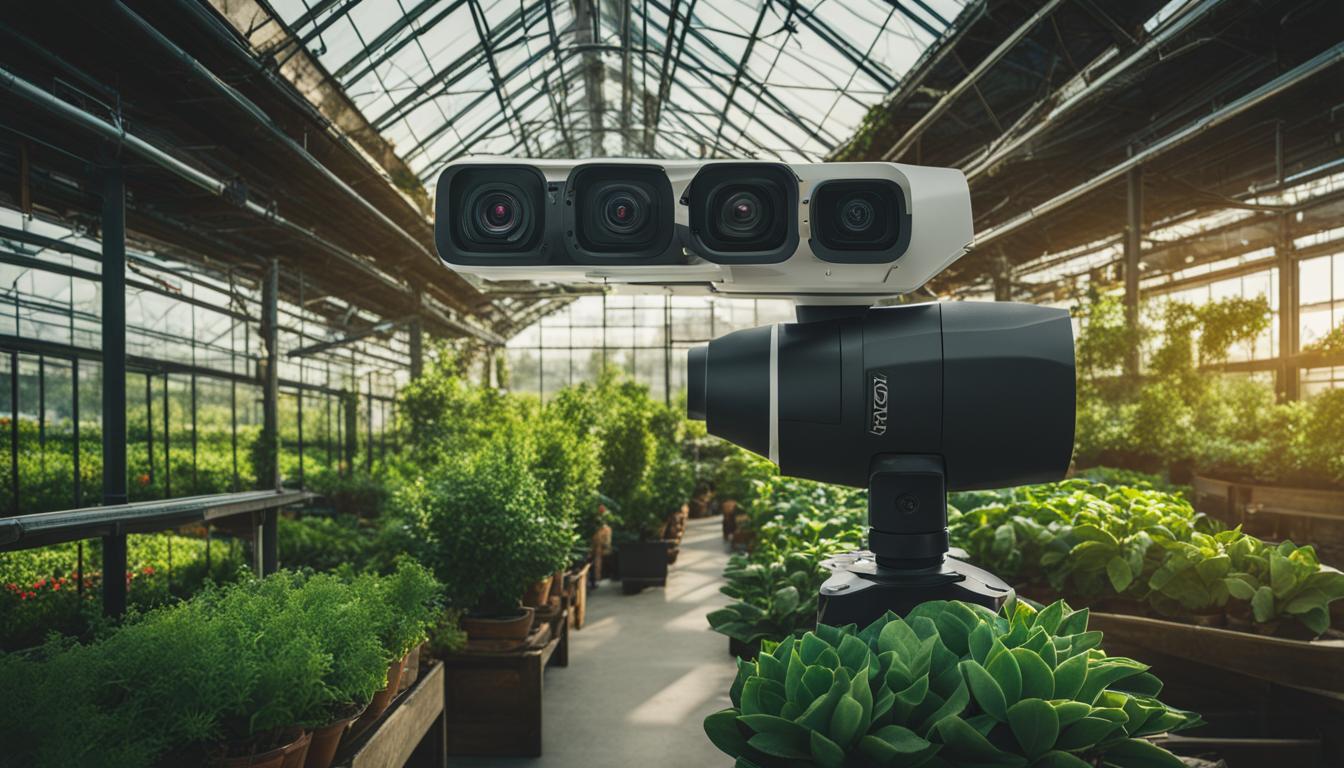
Wrapping Up Equipment for VPD Monitoring
VPD monitoring is an essential tool for maintaining plant health and maximizing yields in agriculture. By selecting the right VPD monitoring system, such as the SensorPush system, growers can accurately measure and monitor temperature, humidity, and VPD levels in their grow areas. This enables the creation of an optimal growing environment at different stages of plant growth.
Monitoring key conditions like temperature, humidity, lighting, CO2 levels, soil moisture, and air circulation is crucial for VPD optimization. By maintaining the ideal VPD range, growers can promote transpiration, nutrient absorption, and overall plant health, which leads to higher yields. Additionally, implementing a reliable and comprehensive VPD monitoring system provides valuable insights into environmental conditions and helps prevent potential issues before they arise.
Choosing the right VPD monitoring system is vital to ensure accurate and efficient monitoring. Systems like the SensorPush system and the Grow Linc system offer scalable solutions that can be customized according to the specific needs of each grow operation. By investing in a reliable monitoring system, growers can achieve precise and timely VPD measurements, enabling them to make informed decisions about irrigation, ventilation, and other environmental adjustments.
In conclusion, VPD monitoring is a critical aspect of plant health and optimization of yields. By implementing the right VPD monitoring system and closely monitoring key conditions, growers can create an ideal growing environment that supports healthy plant growth and maximizes yields. With the use of advanced monitoring technology, growers can take their agricultural practices to the next level and achieve success in their cultivation endeavors.

